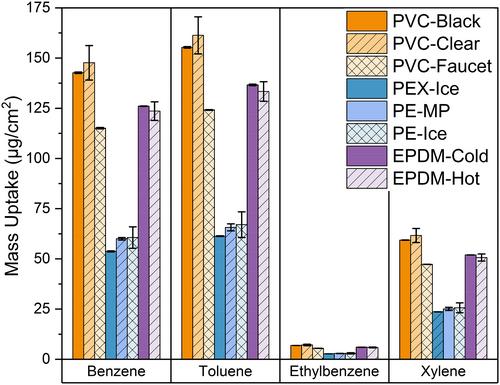Disasters can prompt hydrocarbon contaminants to reach building water systems, and ultimately customer fixtures. Here, seven water supply connectors (e.g., ice-maker lines, faucet connectors, washing machine hoses) were exposed to contaminated water, and were subsequently decontaminated by water flushing. After a 24 h contamination period, water samples were collected after three consecutive 72 h exposure periods. Samples were characterized for volatile organic compound, semi-volatile organic compound, and total organic carbon concentrations. New, uncontaminated, PVC tubing leached phenol at concentrations that exceeded the health advisory. All materials sorbed more than 90% of hydrocarbon contaminants during the initial exposure period. All materials then released the contaminants into the water during decontamination, at times above health-based limits. The majority of sorbed mass remained in the plastics at the end of the decontamination effort, indicating the products posed continued leaching risks. Public health guidance considerations and research needs were identified.


